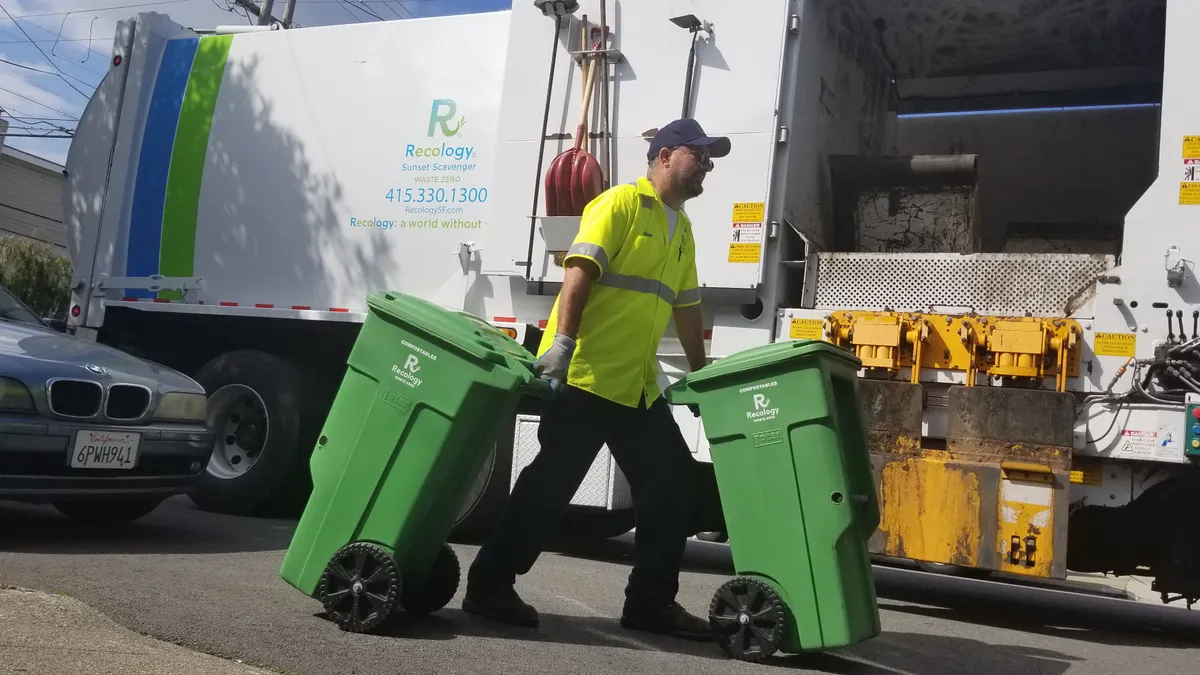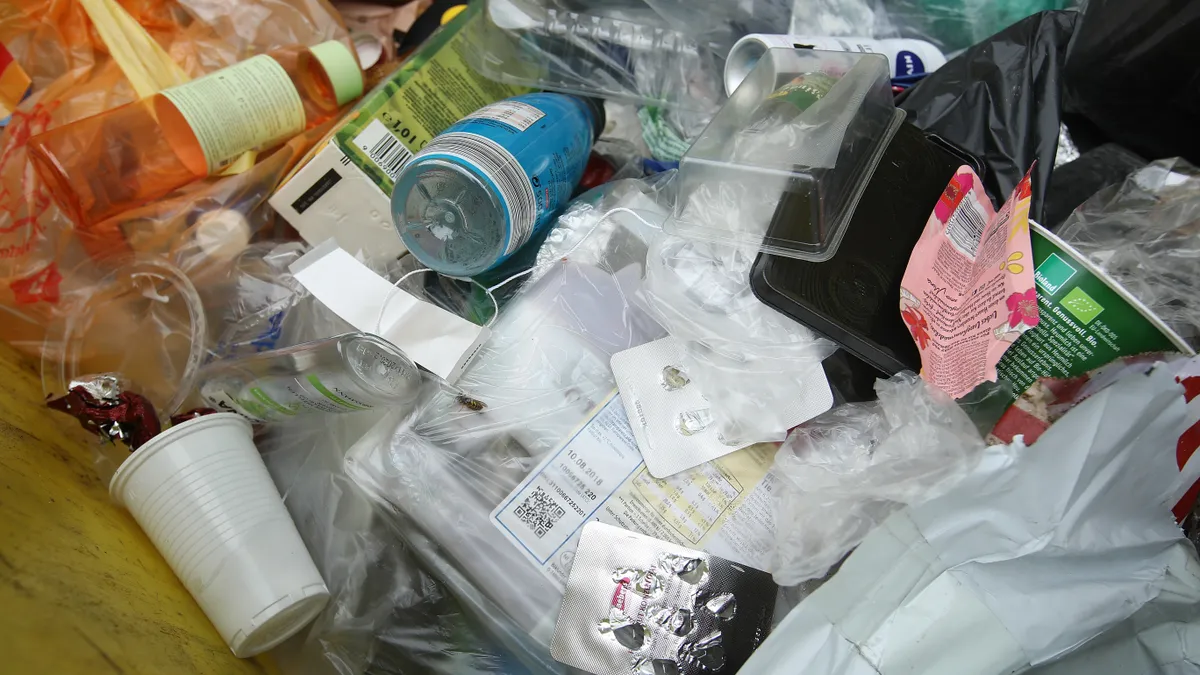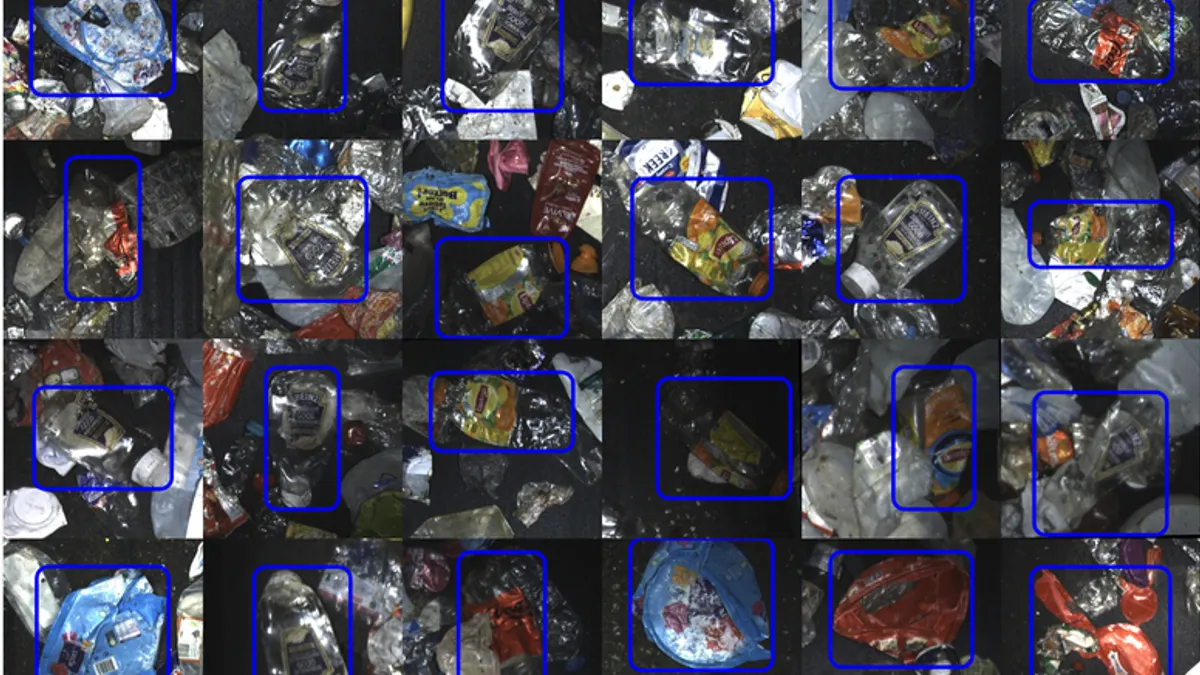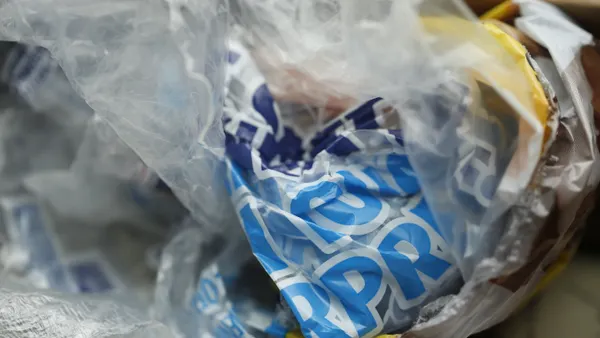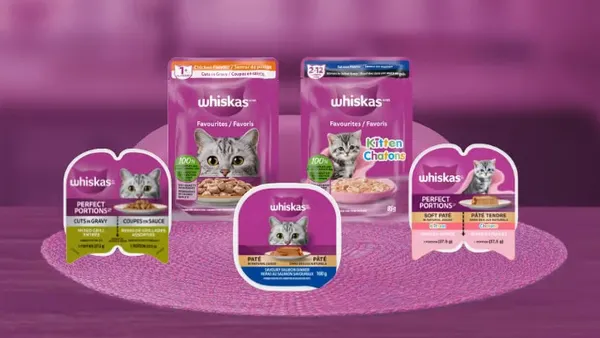Consumers have access to more compostable packaging options than ever before, but the U.S. is rushing to keep pace with end-of-life management due to limited infrastructure to collect and process the material and few laws standardizing labeling and other factors. Extended producer responsibility policies could be one way to improve the situation, speakers at an Oct. 27 Product Stewardship Institute webinar said.
During the webinar, experts discussed how the inclusion of compostable packaging in EPR laws could help fund better infrastructure and education campaigns and support composters who want to use compostable materials as feedstock but don’t want to have to manage contamination and packaging issues. Speakers also advocated for solutions to misleading or nonexistent labeling standards they say can confuse the public and can lead to more contamination.
Here are some takeaways from the event:
Compostable packaging is a natural fit for EPR laws, but coordination is key
Major brands are feeling the pressure to reduce or even eliminate plastic packaging, and consumers see compostable alternatives “as being a major solution to plastic pollution,” said Mario Patenaude, a senior advisor at Éco Entreprises Québec, the producer responsibility organization that sets and collects EPR fees in the province. Québec’s EPR program encompasses all packaging, including compostable types, he said.
As more U.S. states adopt EPR for packaging laws, speakers at the PSI event said compostable packaging should be included in the conversation alongside traditional paper and plastic packaging.
“The problem with EPR currently is that companies pay for their items to be recycled, but in the case of compostable plastics, they're never going to be recycled,” said Phil Rozenski, vice president of public affairs at Novolex, a company that manufactures both recyclable and compostable foodservice items. “Our hope is more EPR programs embrace composting so funding can go to composters to help reduce lookalike contamination and other factors that can go along with it.”
Compostable products also fit well with EPR waste reduction goals, and having compostable packaging producers as well as composters at the table could help strengthen EPR policies in every state, said Alex Truelove, legislative and advocacy manager at the Biodegradable Products Institute. Compostable packaging helps divert food waste from landfills because cups, bowls or straws that have made contact with food can go into the same bin as the leftover food scraps, he said.
Emerging compostable packaging companies like Cruz Foam, which makes food service ware derived from seafood shells and designed to mimic the look and feel of expanded polystyrene clamshells, have trouble producing products at scale while also learning to conform to a patchwork of packaging regulations.
“For small companies like us, we're trying to be part of the solution. It is very useful if regulations are very clear and simple and are all the same across different states and countries,” said cofounder Marco Rolandi.
Joachim Quoden, managing director of the Extended Producer Responsibility Alliance based in Europe, said strong EPR laws encompass all kinds of materials but create special “systems within systems” that target the management of specific material streams based on that material’s unique needs. One example is in Italy, where the country enacted Europe’s first EPR for compostable packaging law in January.
The Italian program requires compostable packaging be collected along with food scraps in the same container. Collection and processing costs are funded by packaging producers through an environmental contribution fund, said Marco Versari, president of Biorepack, a packaging company that operates in Italy. The country is also working on a standardized labeling system to make it easier for residents to identify compostable packaging and sort it into the correct bin, he said.
Clear labeling guidelines will reduce contamination in both recycling and compost streams
Consumer confusion over “look-alike” products can result in compostable cups, clamshells and other items ending up in the trash, and more could be done to improve packaging labeling, speakers said.
Labeling regulations can be integrated into EPR laws or through separate legislation known as “truth in labeling” laws meant to avoid false recyclability or compostability claims on packaging, they said. Washington state’s new law requires a third-party certification on compostable packaging. Labeling must be green or brown to provide visual cues the product is compostable starting in 2024.
The diversity of packaging materials also adds complexity to the labeling issue, Rozenski said. Bio-based packaging can be made with all kinds of materials, such as seaweed and mushrooms, but not all types are compostable. PLA, a material derived from starches like corn, is compostable and can be recycled in some areas, he said.
Just as some compostable packaging stakeholders want streamlined EPR laws, “our hope is that the states will align with each other over time when it comes to labeling [rules], or maybe there'll be a federal standard that helps protect us,” Rozenski said.
In the meantime, BPI is one of the organizations that offers its own compostable labeling guidelines, but many packaging companies are operating on an honor system, Truelove said.
“From a regulatory standpoint, it’s kind of the Wild West out there, except for a few states. It allows people to make a lot of claims. To call something compostable, you need certification, but you can use other terms like ‘decomposable’ to get around it.”
New laws or regulations shouldn’t overburden composters or consumers
Packaging companies also have a responsibility to make sure their compostable offerings are actually compostable — something that’s achieved both through certification and testing, but also by working directly with composters who integrate the packaging into their own feedstock, Rozenski said. Speakers said future investments in more organics infrastructure represents a business opportunity, “but we ought to recognize that composters aren't recyclers. They don't want all of our packaging. They want it when it's part of the system and it creates value,” he said.
Compostable packaging must also hold value to consumers, especially when such packaging is more expensive, Rolandi added. Cruz Foam’s goal is to make packaging that’s as close as possible to conventional packaging in price and durability. “It’s all about easy adoption from the manufacturer and very easy adoption for the consumer.”
Though compostable packaging represents major opportunities, speakers said the market must accommodate diverse kinds of packaging, as long as it’s the right type for the right application and there’s a solid end-of-life plan for that material. Packaging companies must also work on efforts to reduce overall production and consumption, a lesson Italy is working to learn, Versari said.
“It is not a matter of replacing plastic with bio-based plastic, which isn't a sustainable answer to the problem of plastic litter,” he said. “It is, however, a real example of the evolution of the system towards the future.”
Correction: A previous version of this article misstated the compostability of PLA.



